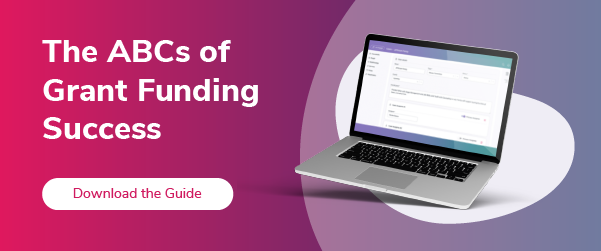Okay so you really want funders to love you, right? That makes sense! Getting funder buy-in often equates to higher levels of investments. So what drives a program officer (or other donor!) to rally behind your organization? Well, it all boils down to trust. And in order for a funder to trust you, they have to know you. Relationship-building efforts such as consistent communication and frequent outreach do help strengthen trust. But it takes more than just an emotional connection—you need data-driven proof points that ensure your organization’s ability to carry out the work that aligns with the funder’s driving mission.
A solid way to verify your organization’s trustworthiness is through third-party validation sites. Simply put, third-party validation sites—also known as charity watchdog sites—develop public reviews of nonprofits. Compiled into a report, these websites allow both individual donors and grant program officers to better understand a nonprofit’s position; focusing on the following areas:
- Financials: everything from 990s, fundraising percentage expenses versus program expenses, audit filings, and the way your organization tracks spending/income
- Governance: this often focuses on information regarding the board, executive leadership, the organization’s structure and decision-making process including public policies, privacy, donor data, etc.
- Program/Impact: the way you implement programs, how you communicate your effectiveness (such as through annual reports), the footprint of your organization’s results
- Culture & Community: your reputation/what others say about you, your expertise, your diversity, equity, and inclusion efforts.
Focus areas and the weighted value of the categories above vary validator to validator. However, all of these reports come with specialized ratings (such as numerical, letter grades, or titles).
Many of the watchdog sites pull from public data, such as your organization’s website, or IRS 990 form. This means that transparency is key. In fact, Candid (who recently merged with GuideStar) distributes Seals of Transparency. According to Guidestar/Candid the type of information a nonprofit provides determines which Seal it earns. The levels are:
Bronze—basic information so your organization can be found
Silver—program information and brand details
Gold—financials and people information
Platinum—goals and the difference you’re making
However, Charity Navigator, the largest largest and most-utilized independent nonprofit evaluator, deeply focuses on the accessibility and type of data. This major player in the watch-dog field rates charities using over 27 metrics to evaluate them on a scale of one to four stars. Compiling everything from whistleblower policies to staff lists, and program financial expenses to performance metrics, Charity Navigator creates a complex grid of accountability weighing the organization’s transparency and capacity to maintain clear records of their impact.
Many of these third-party sites typically auto-generate and pull baseline information from public records, and then allow you to submit documentation to correct or update the information. Other evaluation sites such as Give.org (affiliated with the Better Business Bureau) and GreatNonprofits operate active search engines that sync local charities right into potential donors based on their rankings and geographic locations. Regardless of whether you submit directly to these sites, knowing that baseline information will be pulled and categorized, your organization really has to prioritize public information. Financials should be on your website and easily accessible. Audits should be listed annually. Board members clearly posted and updated. Further, program impact such as reach and progress towards fulfilling your organization’s mission and purpose need to be clearly demonstrated through both qualitative and quantitative means.
So what does this mean for you? The majority of US-based nonprofits go unrated or maintain low grades. If you can secure Platinum levels and 4 star ratings across the board, then that places you within an extremely competitive place for securing support. This means get your house in order! Invest in resources that ensure that you are tracking your data, understanding your program effectiveness, and measuring how your finances align with program impact.
Having ratings, such as the Seal from Guidestar, often equate to a 53% increase in contributions. It’s time to get watch-dog ready! In the next two posts, we’ll review other standardized metrics and prepare your nonprofit to secure high ratings, which ultimately means you’re more competitive for grant awards and donations at large.




